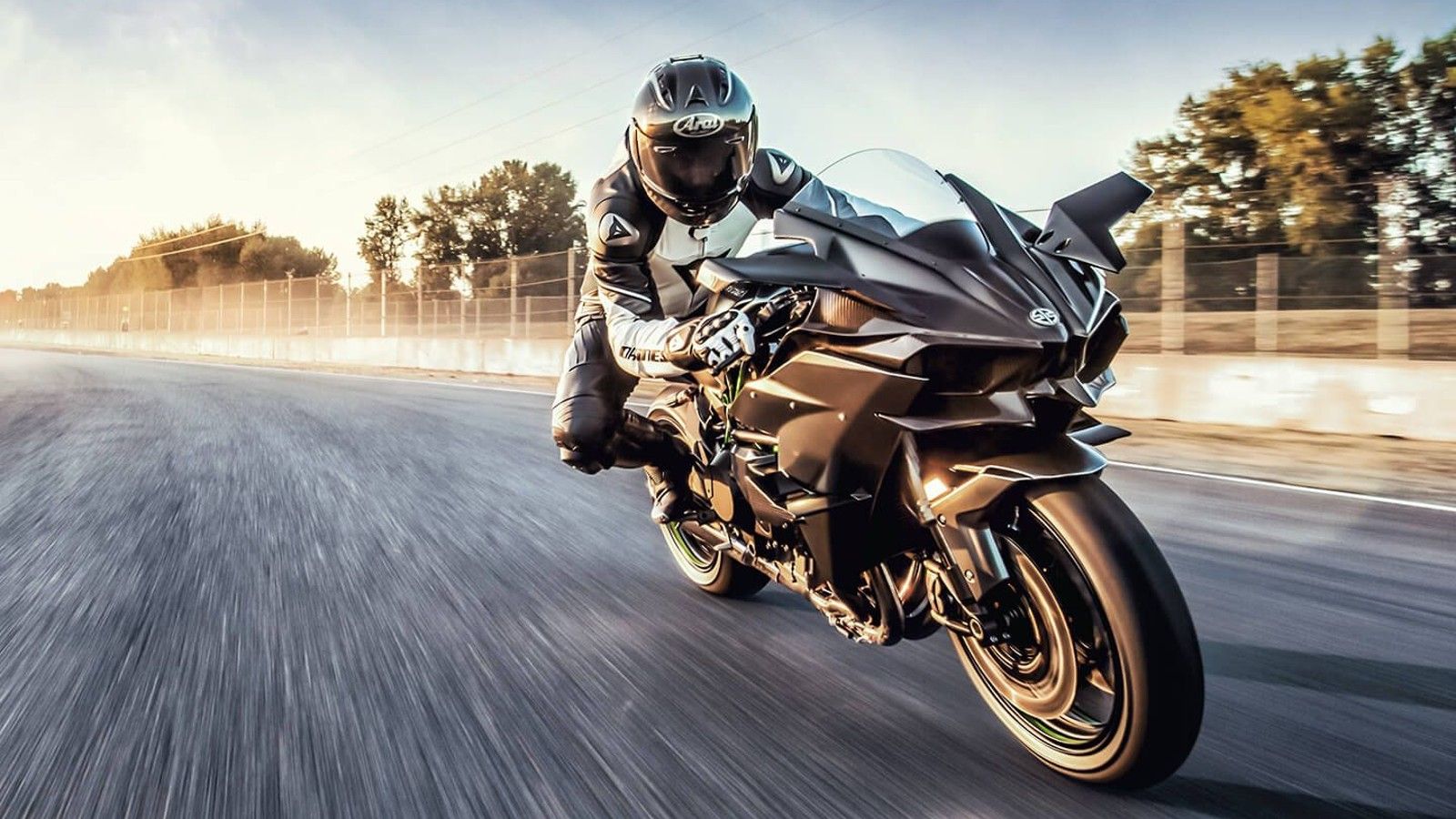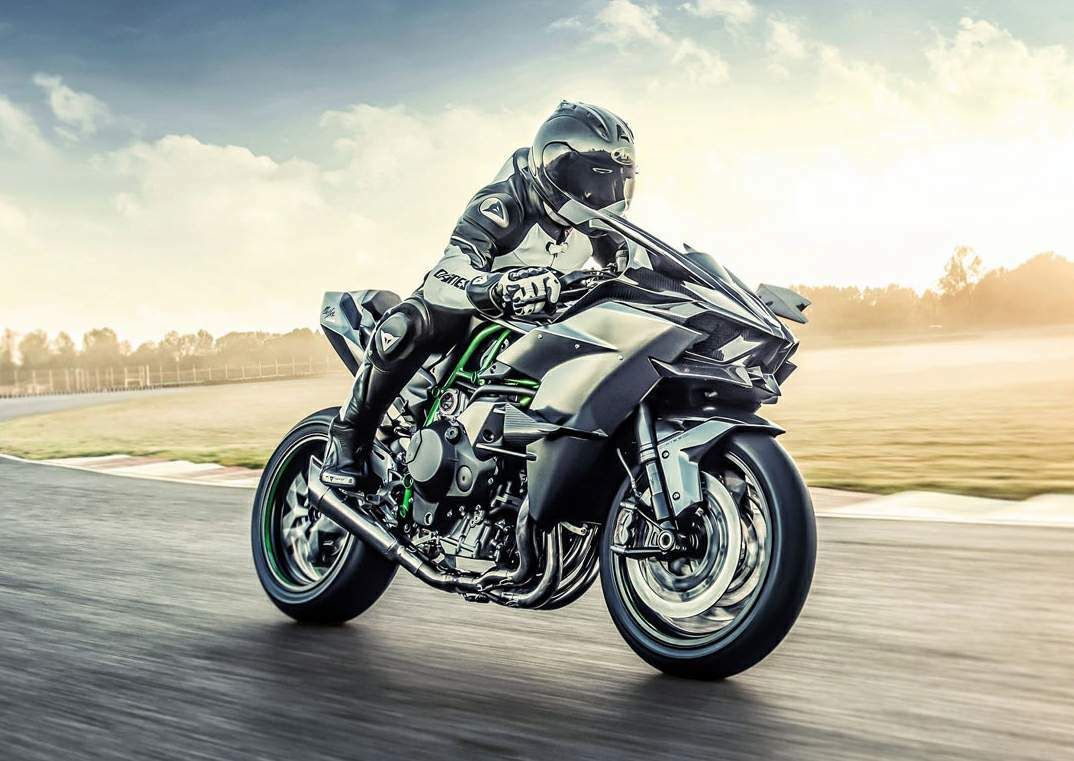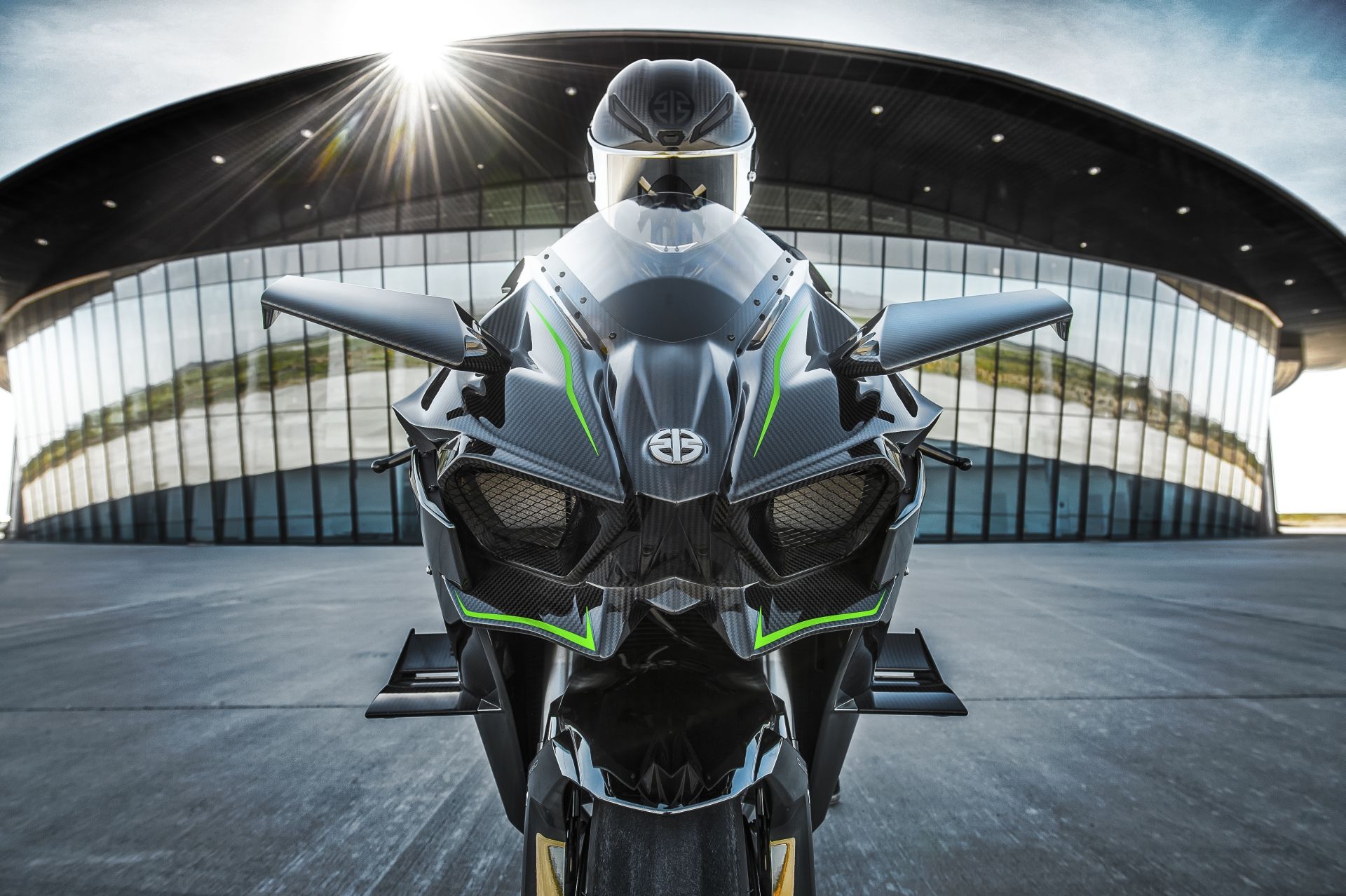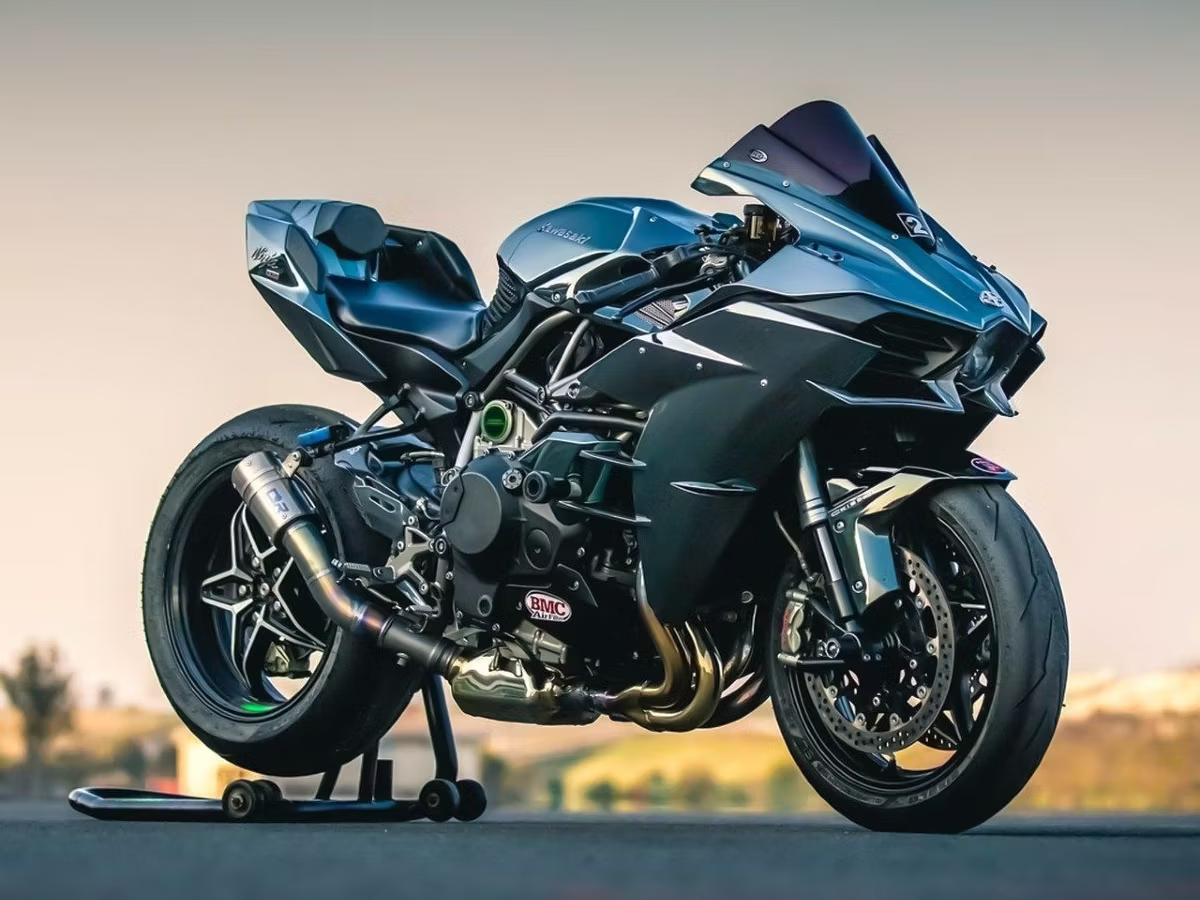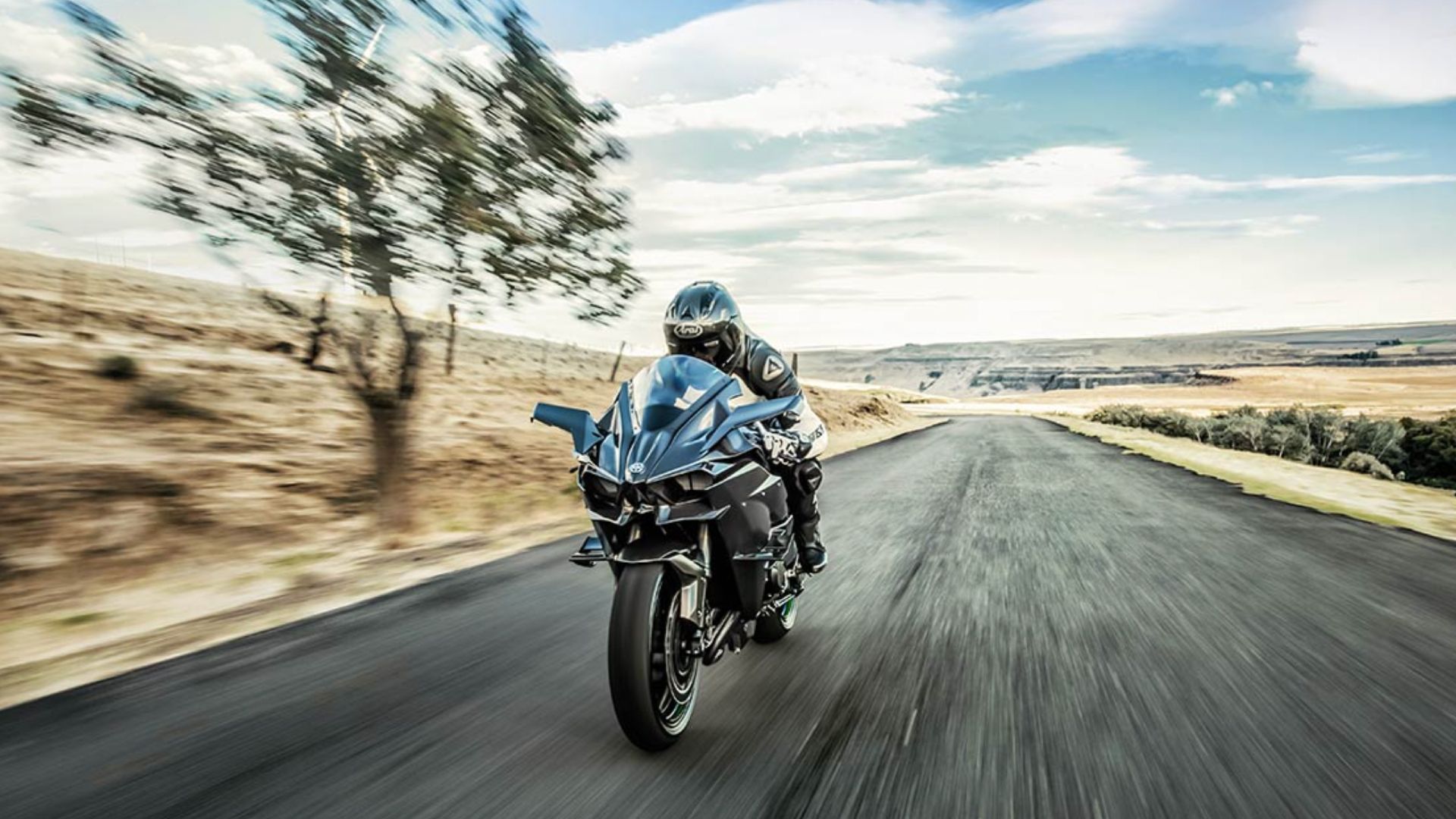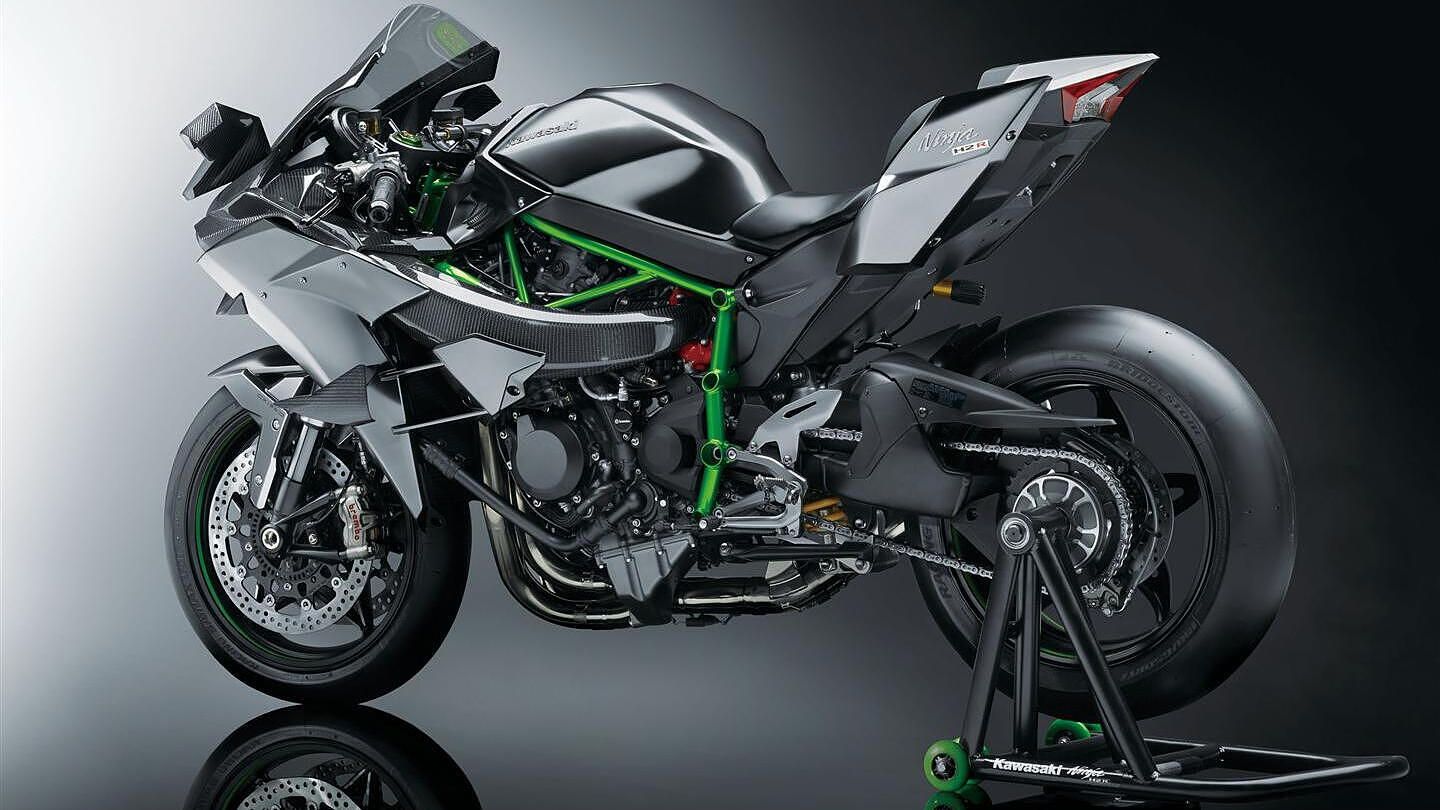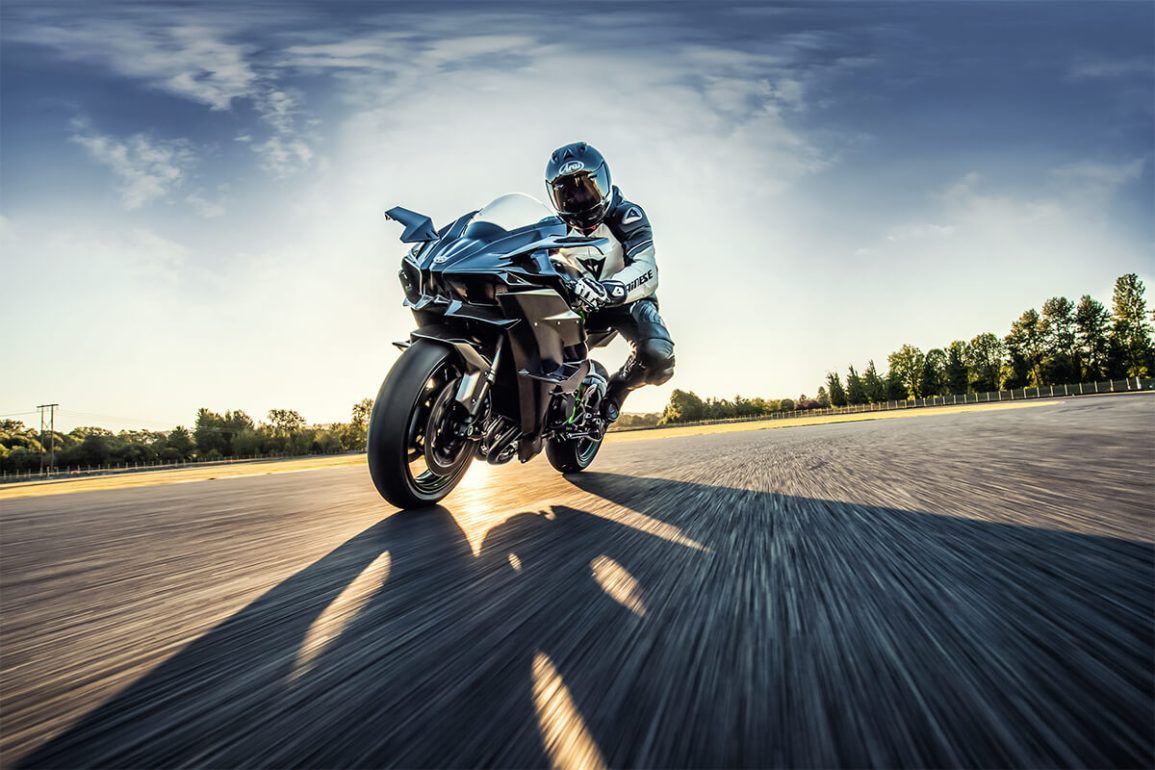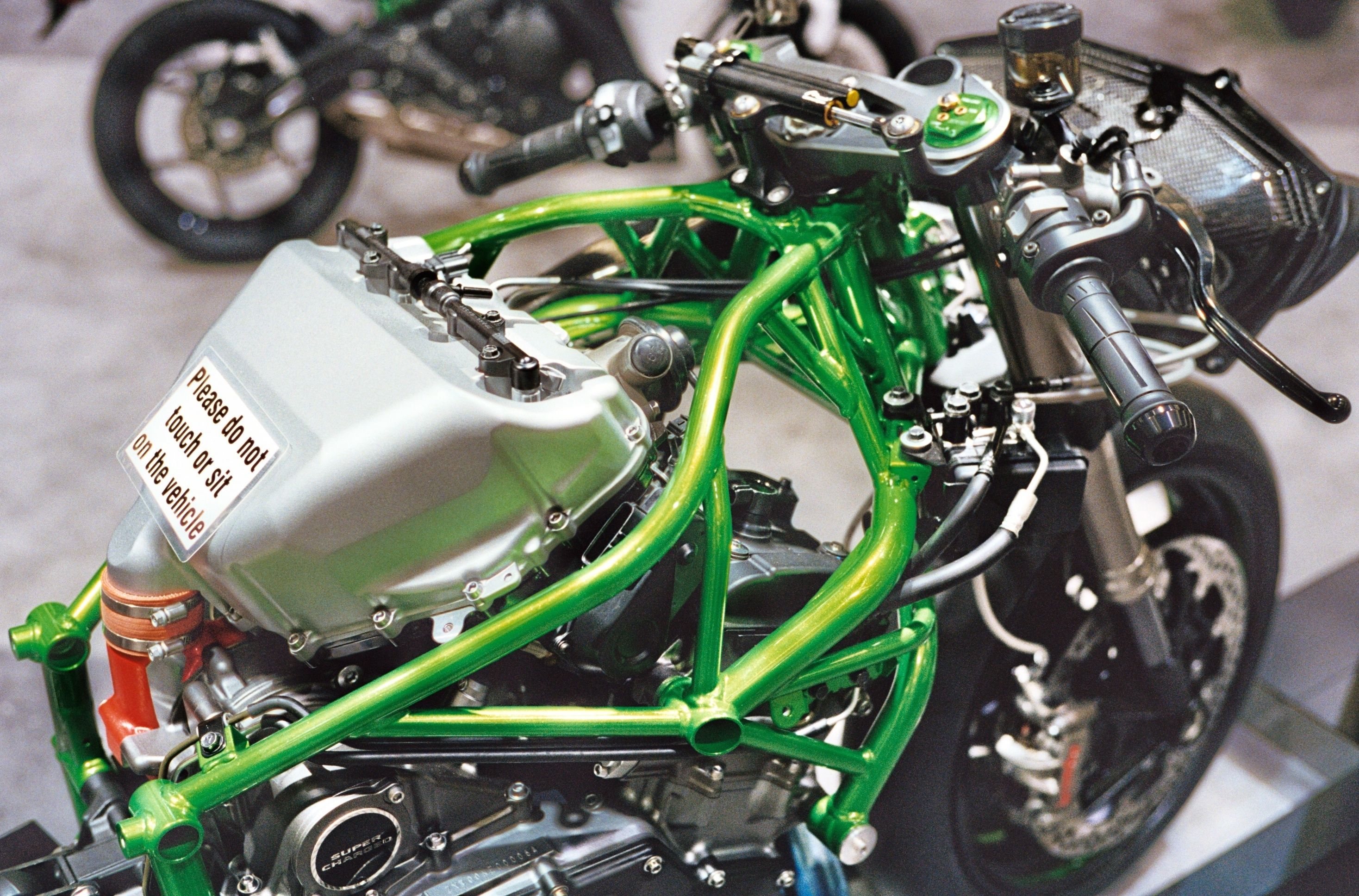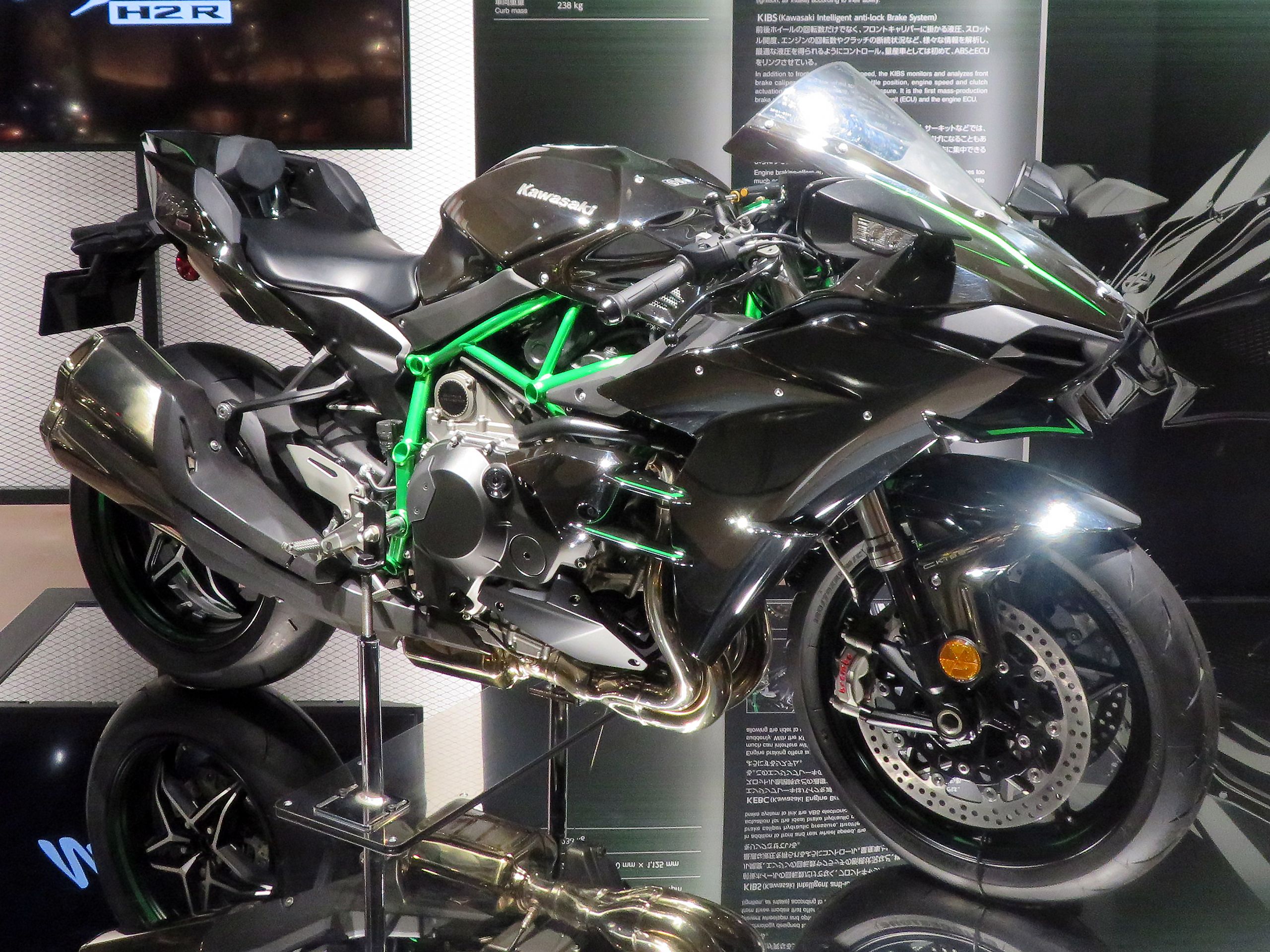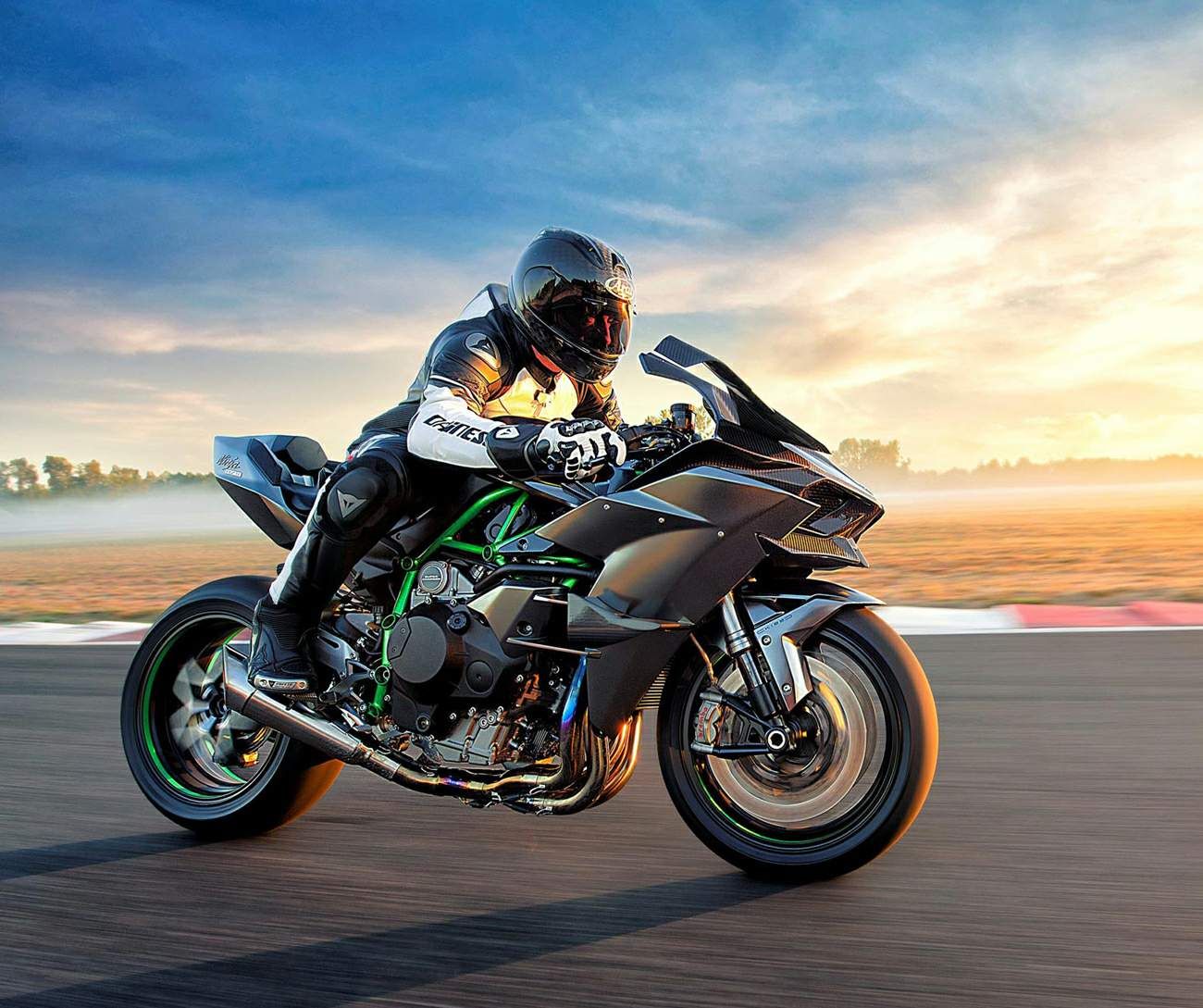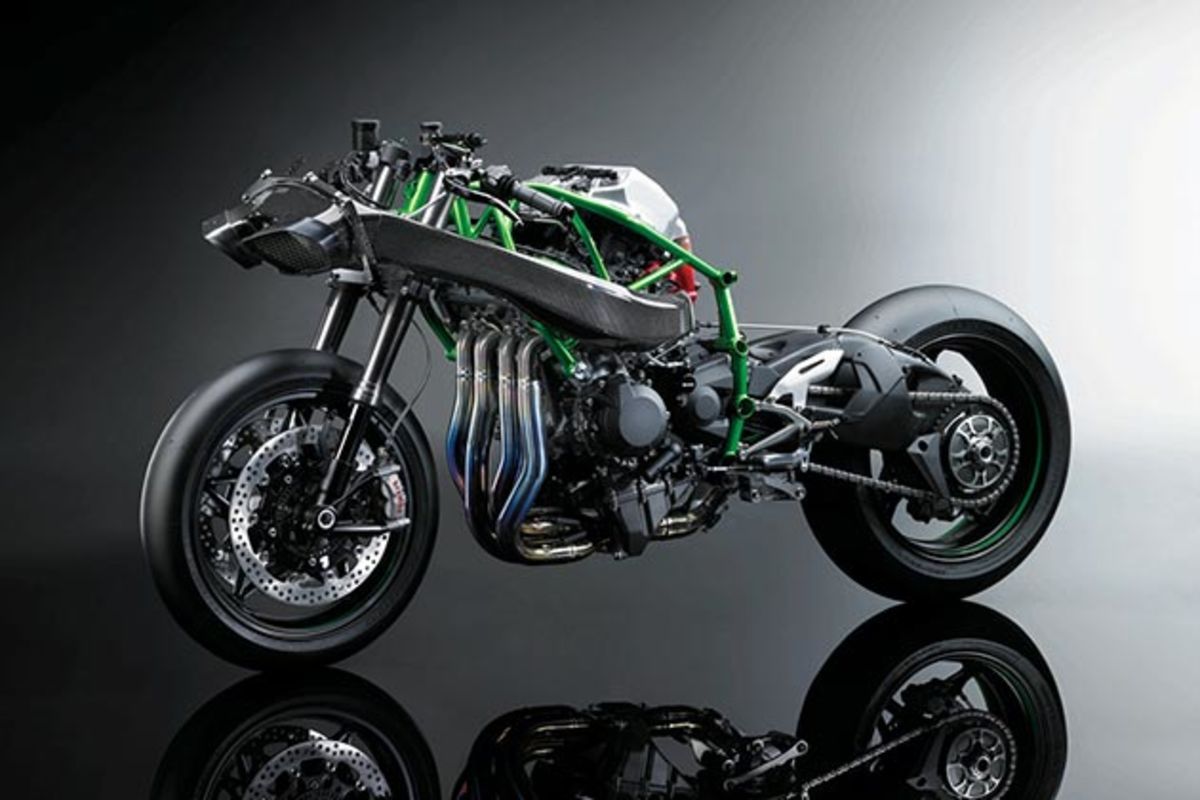Kawasaki created the proverbial lightning in a bottle, when they released the GPZ900 upon an unsuspecting world, back in 1984. You could say that it ushered in the dawn of the modern sport bike. Everything was supremely extra on it, from its modern looks, to the high-end specs, to that memorable name. And though Kawasaki wasn't too keen on it originally, its American branch was utterly convinced that calling the GPZ900 "Ninja" would pay major dividends down the line. Now, with over 10 different Ninjas in their lineup, Kawasaki clearly knows what it has on its hands. And even though each of those variants has a special place in some rider's heart, there's only one that could leave them all behind in one twist of a wrist.
The Kawasaki Ninja H2R is the ultimate dream motorcycle, if speed is your priority. Utilizing a supercharger, the 1000cc, four-cylinder engine develops 326 horsepower and this enables it to be the fastest production motorcycle ever built by any manufacturer. With a top speed of nearly 250 mph, it is clearly too fast for public roads as well as violating the Japanese manufacturers’ gentleman’s agreement to cap the top speed at 186 mph, so Kawasaki got around this by making it a track-only motorcycle.
Updated May 2023: The Kawasaki H2R is a machine like no other. As time goes on we learn more about it, and to keep our readers up to speed on all the new information about the H2R, this article will be updated from time to time.
13 The World’s Fastest Production Motorcycle
Multiple World Supersport champion Kenan Sofuoglu rode a Kawasaki Ninja H2R to a record top speed for a production motorcycle of 400km/h (248.548mph) on the Osman Gazi Bridge in Istanbul, Turkey. The run was in one direction only, and it took Sofuoglu a mere 26 seconds to reach that speed. During a World Supersport race, top speeds on the longest straights are ‘only’ 300km/h (186mph) so this was a new experience even for this experienced racer.
12 The Engine Is Supercharged
The 998cc, inline four-cylinder engine makes use of a supercharger to compress the incoming fuel and air mixture, enabling the engine to develop 326 horsepower at 14,000rpm and 121 pound-feet of torque at 12,500rpm. Kawasaki chose to supercharge over turbocharging because a supercharger is more compact and can be more easily packaged into a motorcycle.
It also utilizes a forged aluminum supercharger impeller, which is 3D machined for durability and precision. It is capable of spinning at 130,000 rpm, delivering huge amounts of air to the engine.
11 Carbon Fiber Wings
A few years back, there was a huge dust up in the MotoGP world when a certain red motorcycle manufacturer introduced winglets onto their bikes. It was a great controversy back then, but now, you won't see a race bike without them. The aerodynamics of the motorcycle are extremely important if it is to remain stable at high speeds.
To help the full fairing develop positive downforce in the H2R, wings are fitted to the front of the fairing where you would normally expect to find the rearview mirrors. On the track, the downforce generated by the wings not only helps acceleration out of corners by keeping the front wheel on the ground and thus preventing the wheelie control from cutting in, but also helps in braking as the front tire is pushed into the ground.
10 Top-Shelf Suspension
Naturally, the Kawasaki Ninja H2R gets nothing but the best suspension components. Suspension specialists at Öhlins tailored their top-of-the-range forks and rear monoshock specifically for the H2R, which it needed to do because the bike is like no other motorcycle ever built.
The front suspension has a 43mm inverted fork with adjustable rebound and compression damping and spring preload. At the rear, Kawasaki installed the Uni-Trak, Öhlins TTX36 gas charged shock. It has the pre-requisite piggyback reservoir, 30-way compression and rebound damping and adjustability. You'll also be able to adjust the spring preload manually with a hand-turn knob.
9 Brembos Brings Everything to a Halt
When racing is the only thing a bike is built for, you better make sure it'll stop on a dime when it needs to. If you've ever been to a track day, it can be chaotic at times, trying to follow lines while passing and being passed by other riders. And the brakes on your bike are subpar, it can be the difference between taking a corner or running off the track.
With that firmly in mind, nothing but the best was good enough for Kawasaki when it came to braking components for the Ninja H2R. Brembo manufactures some of the best brakes in the business and therefore, that is what the Ninja H2R had to have fitted in order to try and contain all that performance. The twin 330mm front disc rotors are gripped by Brembo Stylema four-piston calipers which give incredible stopping power but also incredible control. At the rear, a single twin-piston Brembo caliper might not have the same stopping power, but it contributed massively to braking stability.
8 But There's More To Braking Than Just Brembos
High quality brakes are only part of the equation that begets a racing machine. Kawasaki knew that future owners of the H2R would be of a special racing breed and could probably push the motorcycle to its limit. To protect the rider, perhaps even from themselves, Kawasaki installed their highly effective KIBS system (Kawasaki Intelligent Anti-Lock Brake System).
The goal was to have all the benefits of ABS, while limiting its interference with the feel and overall handling characteristics of the bike. KIBS is capable of monitoring front and rear wheel spin, as well as brake caliper pressure, throttle position, engine speed and gear position. That information is analyzed and fed back to the braking system, allowing for minimally intrusive yet highly effective stopping power.
7 This Ninja Knows When It’s Time For Service
If you'd purchased a brand-new car in the past five years, or so, most likely you'd have noticed when after a certain amount of miles, a little notification pops up on your dash, letting you know it's time for service. Manufacturers do this to protect your car from damage, and to protect you from spending additional money if something were to break.
And as more and more car-makers have begun to utilize this approach in helping you take care of your car, so have motorcycles manufactures followed suit. And though you may not necessarily see that on something like a Royal Enfield Meteor, getting you to take care of the H2R at the right time may prove critical. Having such a highly tuned engine, the Ninja H2R requires servicing every fifteen hours of operation. However, the onboard computer calculates the service interval for you, registering only the time the engine spends above 8,000rpm towards the fifteen-hour total.
6 Comprehensive Electronics Suite
As you would expect, making all that power usable requires a lot of electronic rider aids. And the Ninja H2R comes with a suite of premium electronics. There's the adjustable engine braking control, a six-axis internal measurement unit that enables the ABS and traction control to work even when the bike is leaned over in corners.
Kawasaki also included the KLCM, or the Kawasaki Launch Control Mode, for lightning getaways off the line. And to help the winglets keep the front wheel down, there's wheelie control. A bidirectional quick-shifter elevates your shifting game at the track. And a TFT dashboard incorporating a Bank Angle display that records how far you lean in the corners.
5 Lets You Corner Like A Pro
Part of the electronics package that's included in the H2R is KCMF, or the Kawasaki Cornering Management Function. There is a lot of science happening as you slice in and out of a corner. The KCMF is there to guide you through it safely by engaging the various subsystems within the bike, like the aforementioned KIBS feature.
It evaluates the bike's velocity, lean and vector and adjusts the throttle output and braking accordingly. And all of this is done in micro-seconds, without the rider noticing. It's hard to think of this as anything other than MotoGP level technology.
4 Kawasaki's Smart Chassis
Well that's not exactly true. The chassis itself isn't smart. It's the ECU programming that does all the work. Hidden in the H2R's brain, lies the IMU-Enhanced Chassis Orientation Awareness. The Inertial Measurement Unit, or the IMU for short, monitors inertia in six different directions. The ECU is able to process the information and relay it to various rider aides that assist the pilot in keeping the bike cruising at an optimal and safe level.
3 Painted Unlike Any Other Model
It's as close as you're going to get to a mirror finish sport bike. Kawasaki typically uses robotics to paint their models, as do most manufactures that deal with mass production. But for the H2R the decision was made to let their in-house paint specialists do it by hand.
The paint on the Ninja H2R not only has a base layer of pure silver, which helps give the bike its unmistakable look, but is also self-healing! Minor scratches to the paintwork will gradually disappear as the paint spreads to fill in the scratches. Don’t expect to be able to take a piece of sandpaper to the gas tank, expecting it to look like new the next day, but minor blemishes will disappear.
2 Forget About Riding It On The Road
Let's be clear about one thing, its cost (more on that later), limited production run and lack of certain features we take for granted, make this motorcycle into nothing more than a track toy. It was never Kawasaki's purpose, with this model, to let it be anything but a racecourse weapon. If you want real world usability, buy the H2. The H2R is not only wasted there, it's also illegal.
In keeping with the singular, racetrack directive for the H2R, Kawasaki has made sure that the bike can't go onto public streets, by not equipping it with any lights at all. That includes turn signals, because who needs those on the track? The exhaust muffler would never pass any noise restriction rules either. The mirrors are missing and so is the license plate holder. And as a last preventative measure, it comes fitted with treadless slick race tires which are not only illegal for the road but also dangerous as they have to be hot before they work properly and give any grip.
1 Price And Availability Is Prohibitive
All this greatness is not cheap, even if you are restricted to riding on a racetrack or private land. The Ninja H2R costs $57,500, but you are buying the fastest production motorcycle in the world, and it’s not one that you will see very often. Being a Kawasaki, it is exquisitely detailed and built, and it goes faster than even a MotoGP bike, the top speed of which is around 220 mph.
But even if you do have the cash and a nearby racecourse, getting your hands on one would be a tricky proposition. As of this update, Kawasaki's US website notes that the order period for the H2R is closed. And we could only find two available models for sale online. Chances are, those that have been able to purchase one, are holding onto it tight. And because of how special the H2R is, we certainly don't blame them.

